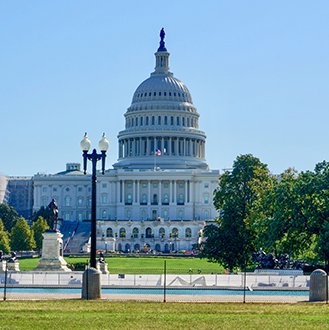EBRI December Policy Forum #86
Retirement, Health, and Financial Wellbeing

Welcome and Session Kick-Off
- Lori Lucas, CFA, President and CEO, Employee Benefit Research Institute
- Bob Holcomb, Vice President Legislative and Regulatory Affairs, Empower Retirement
Spending in Retirement: Policy Implications
In this session, Dr. Munnell will discuss the implications of whether research that shows declining consumption reflects households' preferences or a lack of preparedness.
- Alicia Munnell, Peter F. Drucker Professor of Management Sciences at Boston College’s Carroll School of Management and Director of the Center for Retirement Research at Boston College
Director Kathy Kraninger of the CFPB on Emergency Savings
Spending in Retirement: Recent Research and Practical Approaches
As more Baby Boomers are approaching retirement, fewer of them are covered by defined benefit (DB) plans, which typically generate a regular and consistent income stream, and instead increasingly have defined contribution (DC) plans, which build up benefits as an account balance. With so many workers heading toward retirement, there is a need to discuss public policy proposals and research surrounding the consumption behavior of older Americans.
- James Veneruso, Vice President of DC Consulting, Callan, Moderator
- Zahra Ebrahimi, EBRI Research Associate
- Gal Wettstein, Research Economist, Boston College Center for Retirement Research
- Dr. Wei-Yin Hu, Vice President, Financial Research, Financial Engines
Washington Update
- Chris Gaston, Senior Policy Director, Davis & Harman
Price and Quality Transparency and Other Initiatives to Address High Cost Claimants
On June 24, 2019, the Trump administration released Executive Order on price and quality transparency that concludes “making meaningful price and quality information more broadly available to more Americans will protect patients and increase competition, innovation, and value in the healthcare system.” However, while millions of Americans have access to transparency tools, few use them, and some research would go so far as to say that such tools are not associated with lower spending. Since 10 percent of population accounts for 70 percent of health care spending, and 60-70 percent of these people reach their out-of-pocket maximum, transparency tools may not be sufficient to engage high-use workers and dependents in their health care. This panel will discuss the pros and cons of price and quality transparency tools. It will also examine other ways in which to engage high users of health care services in their health care.
- Steve Wojcik, Vice President, Public Policy, National Business Group on Health, Moderator
- Paul Fronstin, Director, Health Research, Employee Benefit Research Institute (EBRI) – to discuss findings from EBRI report on persistency in high cost claims and implications for transparency
- Marybeth Gray, Senior Vice President of Health & Welfare Consulting Trion Consulting, a Marsh & McLennan Agency, LLC
- Adam “Buck” Buckalew, Deputy Health Policy Director, U.S. Senate Committee on Health, Education, Labor and Pensions
- Martin Ahrens, Senior Director, I&FS, Health Management Service, National Rural Electric Cooperative Association
Motivations and Measurement of Financial Wellness Initiatives
- Jack VanDerhei, EBRI Director of Research
Luncheon Keynote
- Suzanne Clark, President, U.S. Chamber of Commerce

